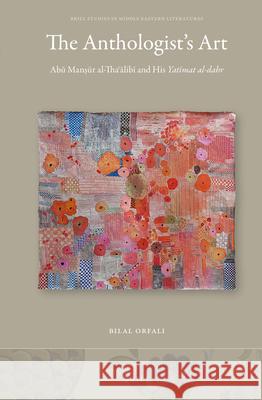The Anthologist’s Art: Abū Manṣūr al-Thaʿālibī and His Yatīmat al-dahr » książka
The Anthologist’s Art: Abū Manṣūr al-Thaʿālibī and His Yatīmat al-dahr
ISBN-13: 9789004316294 / Angielski / Twarda / 2016 / 272 str.
Why did premodern authors in the Arabic-Islamic culture compile literary anthologies, and why were these works remarkably popular? How can an anthology that consists of reproduced material be original and creative, and serve various literary and political ends? How did anthologists select their material, then record and arrange it? This book examines the life and works of Abū Manṣūr al-Thaʿālibī (350-429/961-1039), an eminent anthologist from Nīshāpūr, paying special attention to his magnum opus, Yatīmat al-dahr (The Unique Pearl), and its sequel, Tatimmat al-Yatīma (The Completion of the Yatīma). This book is a direct window on to an anthologist's workshop in the second half of the fourth/tenth century. It examines the methodological consciousness expressed in Thaʿālibī's selection and arrangement, and his sophisticated system of internal references and cross-references to other works; how he selected from his contemporaries' oeuvres; how he sought, recorded, memorized, misplaced, and sometimes lost or forgot his selections; how he scrutinized the authenticity of material, accepting, questioning, or rejecting its attribution; and the errors and inconsistencies that resulted from this process.











